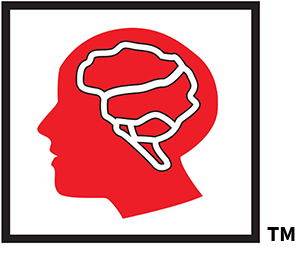Introduction
Attention Deficit Hyperactivity Disorder (ADHD) is a neurodevelopmental disorder that affects individuals of all ages. While ADHD is commonly associated with school-age children, it is increasingly recognized that similar symptoms can persist into adulthood. Adult ADHD can present unique challenges in various aspects of life, including relationships, work, and overall well-being. This comprehensive article aims to provide an extensive checklist of adult ADHD symptoms, helping individuals identify and understand the complexities of the condition. By recognizing this list of symptoms which cause significant problems and seeking appropriate support through your healthcare provider, individuals with adult ADHD can enhance their self-awareness and develop effective strategies for managing their symptoms.
Understanding Adult ADHD
A. Definition and Prevalence according to the American Psychiatric Association: Defining ADHD as a neurodevelopmental disorder characterized by persistent patterns of inattention, hyperactivity, and impulsivity. Exploring the prevalence rates of adult ADHD and the growing recognition of the condition.
B. Diagnosis and Assessment: Describing the diagnostic process for adult ADHD, including the criteria outlined in the Diagnostic and Statistical Manual of Mental Disorders (DSM-5). Discussing the importance of comprehensive assessment by mental health professionals.
C. Subtypes of Adult ADHD: Exploring the different subtypes of adult ADHD, including predominantly inattentive, predominantly hyperactive-impulsive, and combined type. Highlighting the unique characteristics of each subtype.

ADHD Diagnosis and Medications
Attention Deficit Hyperactivity Disorder (ADHD) is a complex neurodevelopmental disorder that requires a multifaceted approach to treatment. Medication is one of the key components in managing ADHD symptoms effectively. This article provides a comprehensive guide to the different types of ADHD medications, their mechanisms of action, potential side effects, and considerations for choosing the most suitable treatment option.
I. Stimulant Medications
A. Methylphenidate-Based Medications:
- Immediate-Release Methylphenidate: Exploring short-acting formulations like Ritalin and Focalin, their rapid onset of action, and shorter duration of effects.
- Extended-Release Methylphenidate: Discussing long-acting formulations such as Concerta, Ritalin LA, and Metadate CD, which provide extended symptom control throughout the day.
- Methylphenidate Transdermal Patch: Describing the Daytrana patch and its unique application method.
B. Amphetamine-Based Medications:
- Immediate-Release Amphetamines: Exploring short-acting formulations like Adderall and Dexedrine, their effects, and potential side effects.
- Extended-Release Amphetamines: Discussing long-acting formulations such as Adderall XR, Vyvanse, and Mydayis, which offer extended symptom relief with once-daily dosing.
II. Non-Stimulant Medications
A. Atomoxetine (Strattera): Exploring the unique mechanism of action of atomoxetine, a selective norepinephrine reuptake inhibitor (SNRI), and its efficacy in managing ADHD symptoms.
B. Alpha-2 Adrenergic Agonists:
- Clonidine: Discussing the use of clonidine for ADHD, particularly in individuals with comorbid conditions or as an adjunctive treatment.
- Guanfacine: Exploring the benefits and considerations of guanfacine extended-release (Intuniv) for managing ADHD symptoms.

III. Other Medications and Considerations
A. Bupropion: Discussing the off-label use of bupropion, an antidepressant, for treating ADHD symptoms in certain cases in the adult population.
B. Antidepressants: Exploring the use of selective serotonin reuptake inhibitors (SSRIs) and tricyclic antidepressants (TCAs) when ADHD symptoms coexist with depression or anxiety disorder.
C. Combination Therapy: Discussing the potential benefits and considerations of combining different medications to address ADHD symptoms more comprehensively.
D. Individual Variability and Personalized Treatment: Highlighting the importance of individualizing medication choices based on the patient’s unique profile, comorbid conditions, and potential side effects.
IV. Considerations and Side Effects
A. Effectiveness and Response: Discussing the variability of treatment response and the need for ongoing evaluation and adjustment of medication regimens.
B. Potential Side Effects: Highlighting common side effects such as appetite suppression, insomnia, irritability, and cardiovascular effects. Discussing strategies for managing side effects.
C. Monitoring and Safety: Emphasizing the importance of regular monitoring, including physical health assessments, monitoring growth in children, and ongoing communication with healthcare professionals.
Navigating ADHD medications requires a comprehensive understanding of the available treatment options, their mechanisms of action, potential side effects, and individual considerations. Stimulant medications, including methylphenidate-based and amphetamine-based formulations, remain the primary treatment choice for many individuals. Non-stimulant options, such as atomoxetine and alpha-2 adrenergic agonists, offer alternatives for those who do not respond well to or cannot tolerate stimulants. Other medications and combination therapies may be considered in specific cases. It is crucial to work closely with healthcare professionals to find the most effective and safe medication regimen for managing ADHD symptoms, taking into account individual variability and needs. Ongoing monitoring, open communication, and a comprehensive treatment approach involving behavioral interventions and support strategies are key to optimizing outcomes for individuals with ADHD.
The history of ADHD showcases the gradual progression of knowledge and understanding surrounding this complex neurodevelopmental disorder. From early observations to modern research, the conceptualization of ADHD has evolved significantly. The diagnostic criteria have become more refined, reflecting our deepening understanding of the biological and neurological underpinnings of ADHD. Moreover, societal perspectives have shifted, leading to greater recognition and support for individuals with ADHD. As we move forward, continued research, awareness, and access to comprehensive assessment and evidence-based interventions will contribute to better outcomes for individuals with ADHD. Understanding the historical journey of ADHD provides a foundation for ongoing advancements in diagnosis, treatment, and support for individuals with this condition. There is a widely considered viewpoint held by the world health organization that being aware of the adhd symptom checklist can educate the general public of the symptoms of attention-deficit in order to create appropriate treatment. This disorder which starts in early childhood and persists into adulthood can pose significant challenges to society in general.
Checklist of Adult ADHD Symptoms
A. Symptoms of Inattention
- Difficulty Concentrating: Explaining the challenges adults with ADHD face in maintaining focus and sustaining close attention to tasks, which is an important part of executive function.
- Distractibility: Describing the propensity for distraction and the struggle to filter out irrelevant stimuli and avoid making careless mistakes.
- Poor Organization and Time Management: Discussing difficulties in organizing tasks, managing time effectively, and prioritizing responsibilities.
- Forgetfulness: Highlighting the frequent memory lapses and forgetfulness experienced by adults with ADHD.
- Procrastination: Exploring the tendency to delay or postpone tasks, leading to increased stress and impaired productivity.
B. Hyperactivity and Restlessness Symptoms
- Restlessness and Fidgeting: Discussing the constant need for movement, difficulty sitting still, and the sensation of restlessness.
- Excessive Talking: Describing the tendency to talk excessively, interrupt conversations, and struggle with turn-taking.
- Impulsivity: Exploring impulsive behaviors such as acting without thinking, interrupting others, and engaging in risk-taking activities.
- Difficulty Relaxing: Discussing the challenges in relaxing and experiencing a constant sense of restlessness.
- Intolerance of Boredom: Describing the need for stimulation and difficulty engaging in tasks that are not inherently interesting.
C. Emotional and Psychological Symptoms
- Emotional Sensitivity: Highlighting heightened emotional responses, mood swings, and a tendency to react intensely to criticism or rejection.
- Low Self-Esteem: Discussing the impact of ADHD symptoms on self-esteem, self-worth, and feelings of inadequacy.
- Impaired Executive Functioning: Exploring challenges in planning, organization, decision-making, and problem-solving.
- Relationship Difficulties: Discussing the impact of impulsivity, forgetfulness, and inconsistent behavior on personal relationships and social interactions.
- Mental Health Challenges: Describing the higher prevalence of comorbid mental health conditions such as anxiety and depression in individuals with adult ADHD.

Impact on Daily Functioning
A. Academic and Professional Life: Discussing the challenges adults with ADHD face in educational settings, workplace performance, and career advancement.
B. Relationships and Interpersonal Dynamics: Exploring the impact of ADHD symptoms on personal relationships, communication, and social interactions.
C. Mental Health and Well-being: Discussing the potential consequences of untreated adult ADHD on overall mental health, self-esteem, and quality of life.
D. Financial Management: Highlighting the challenges in financial planning, impulse control, and maintaining financial stability.
Seeking Support and Management Strategies
A. Diagnosis and Professional Support: Discussing the importance of seeking professional evaluation and diagnosis from mental health specialists of your total score.
B. Medication and Treatment Options: Exploring the role of medication, such as stimulants or non-stimulant alternatives, in managing ADHD symptoms. Describing behavioral therapy approaches, including cognitive-behavioral therapy (CBT).
C. Lifestyle Strategies: Providing practical strategies for managing ADHD symptoms and mood disorder, including the development of routines, creating supportive environments, and utilizing organizational tools.
D. Support Networks and Self-Care: Discussing the importance of seeking support from family members, friends, and support groups. Highlighting self-care practices, daily activities, stress management techniques, and the benefits of regular exercise and sufficient sleep.
Recognizing and understanding the comprehensive checklist of ADHD symptoms in adults is crucial for accurate diagnosis, effective management, and improved quality of life. By identifying these symptoms and subtypes of ADHD, seeking professional evaluation, and implementing appropriate support strategies, individuals with adult ADHD can enhance their self-awareness, improve daily functioning, and cultivate healthy relationships. Continued research, awareness, and destigmatization of adult ADHD are essential for ensuring that individuals receive the necessary resources and support to thrive and succeed in all aspects of their lives.
Attention Deficit Hyperactivity Disorder (ADHD) is a neurodevelopmental disorder that has gained increasing recognition and understanding over the years. This essay delves into the historical roots of ADHD, exploring the early observations, the evolution of diagnostic criteria, and the transformation of societal perspectives. Understanding the history of ADHD and common misconceptions provides valuable insights into the progression of knowledge, societal attitudes, and treatment approaches.
I. Early Observations and Milestones
A. Early Descriptions: Tracing back to the early 18th century, physicians and scholars made observations of behaviors consistent with ADHD, though under different names and contexts.
B. Conceptualization of Hyperactivity: In the mid-20th century, pediatricians such as George Still and Charles Bradley began to identify and describe the symptoms of hyperactivity and impulsivity in children.
C. Shifting Perspectives: Highlighting significant shifts in understanding and terminology, including the transition from “hyperkinetic impulse disorder” to “minimal brain dysfunction” and eventually to “attention deficit disorder” and “ADHD.”
II. Evolution of Diagnostic Criteria
A. Diagnostic and Statistical Manual of Mental Disorders (DSM): Examining how ADHD has been classified and defined in various editions of the DSM, fourth edition and fifth edition. Discussing the inclusion of subtypes and the emergence of the combined type as the most recognized presentation.
B. Critiques and Controversies: Addressing the controversies surrounding the diagnosis of ADHD, including concerns about overdiagnosis and the potential for misuse of medication. Discussing the importance of accurate diagnosis through comprehensive assessment.
III. Biological and Neurological Perspectives
A. Neurotransmitters and Brain Structure: Exploring the role of neurotransmitters, particularly dopamine and norepinephrine, in the etiology of ADHD. Discussing the involvement of key brain regions, such as the prefrontal cortex and basal ganglia.
B. Genetic Factors: Investigating the influence of genetic factors on ADHD susceptibility and heritability. Highlighting the discovery of specific genes associated with ADHD.
C. Neurodevelopmental Trajectories: Examining the developmental trajectory of ADHD and how it can persist into adulthood, influencing cognitive functioning, executive control, and behavioral regulation.
IV. Societal Perspectives and Treatment Approaches
A. Paradigm Shift: Discussing the evolving societal understanding of ADHD, from viewing it as personality disorders to recognizing it as a neurodevelopmental disorder. Highlighting the importance of destigmatizing ADHD and promoting awareness is part of the problem.
B. Behavioral and Psychosocial Interventions: Exploring the use of behavioral therapies, such as behavior modification and cognitive-behavioral therapy, to address symptom management and skill development. Discussing the role of psychoeducation for individuals with ADHD and their families.
C. Medication and Pharmacological Interventions: Examining the use of stimulant medications, such as methylphenidate and amphetamines, as the primary pharmacological treatment for ADHD. Discussing their efficacy, safety, and considerations for their use.

[…] ADHD Checklist Adults: Identifying Symptoms, Challenges, Symptoms of ADHD, and Strategies for Effect… […]